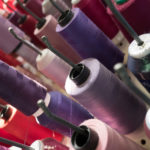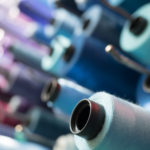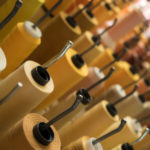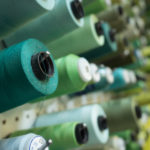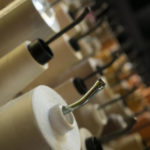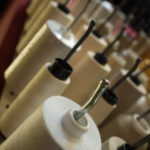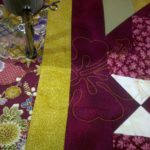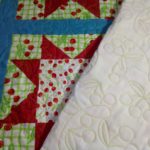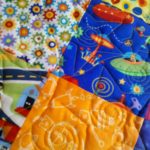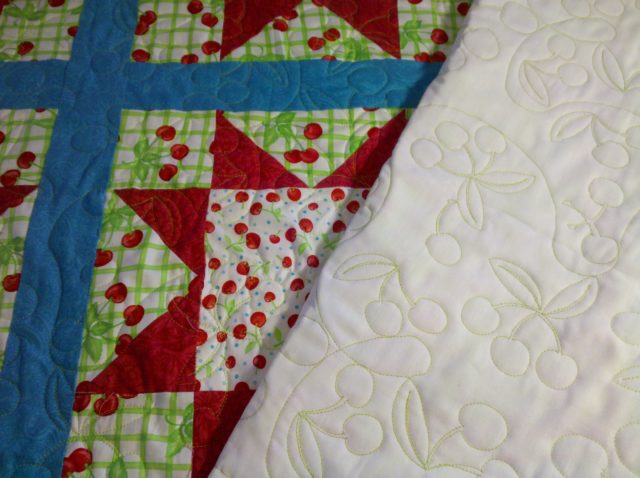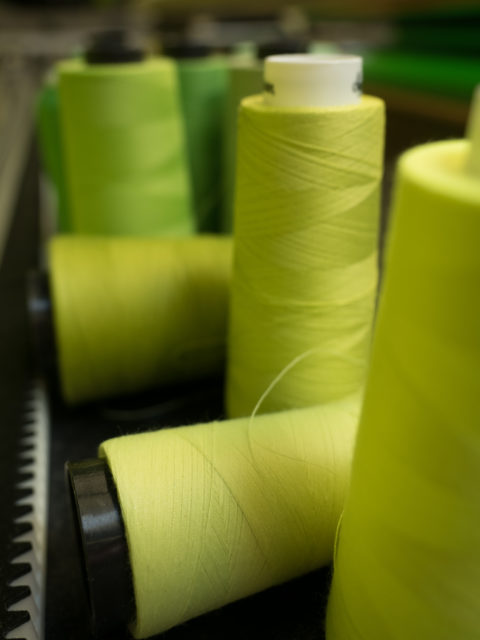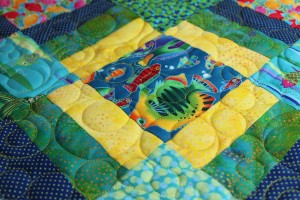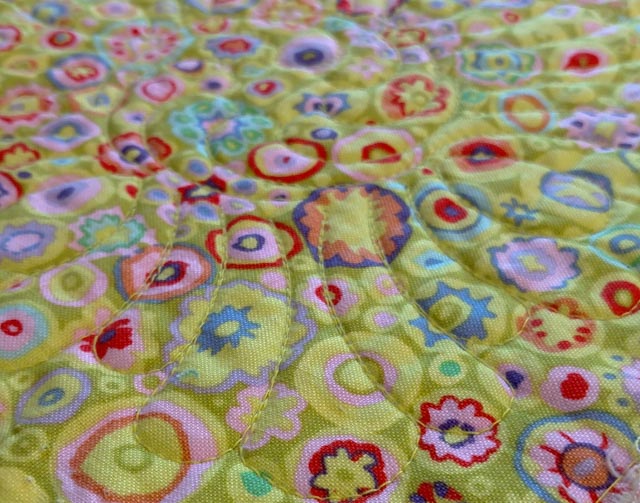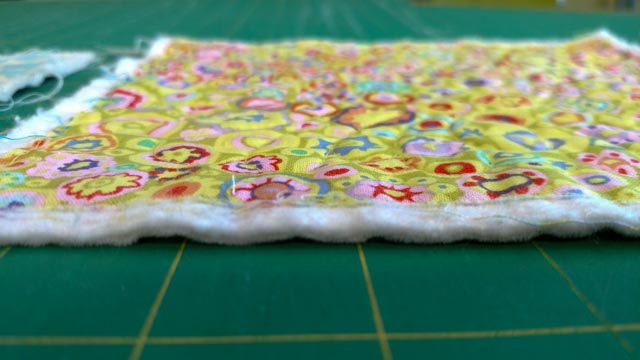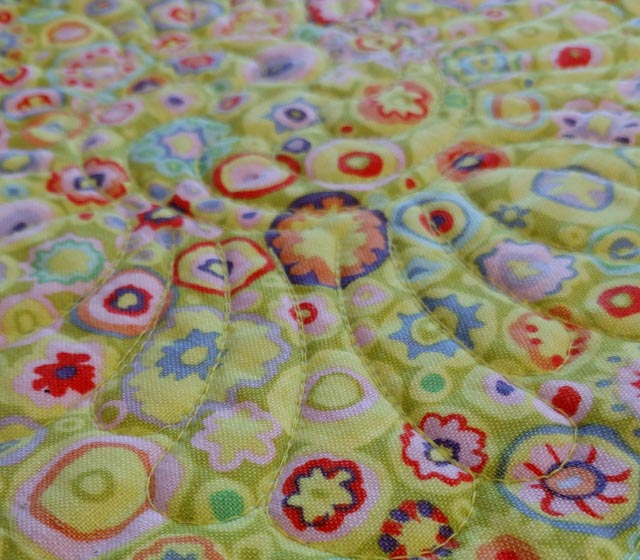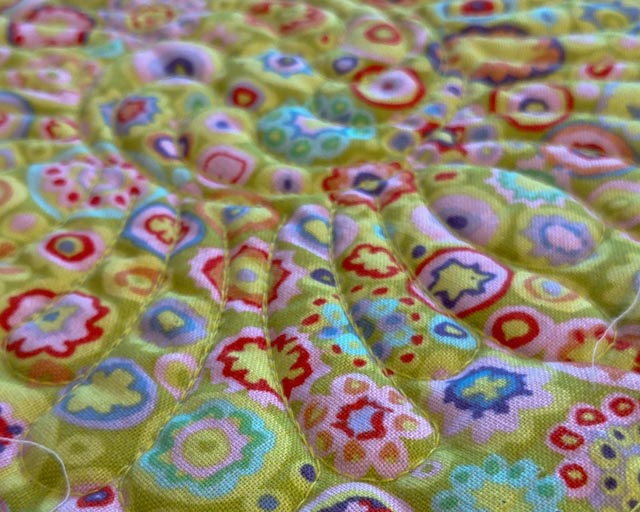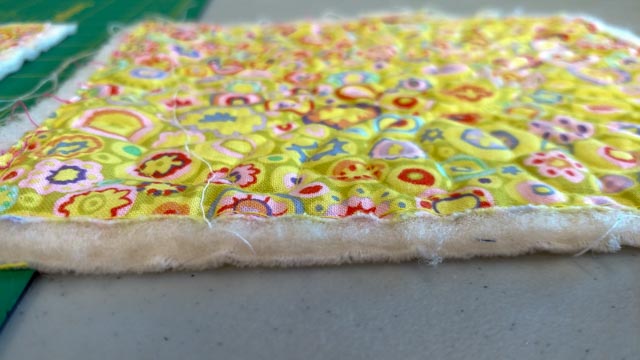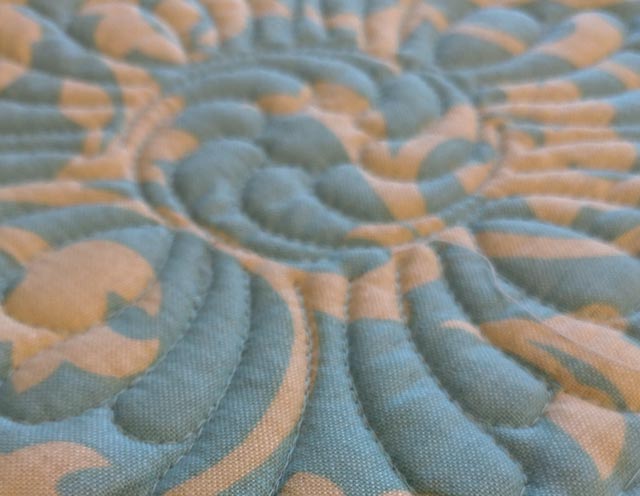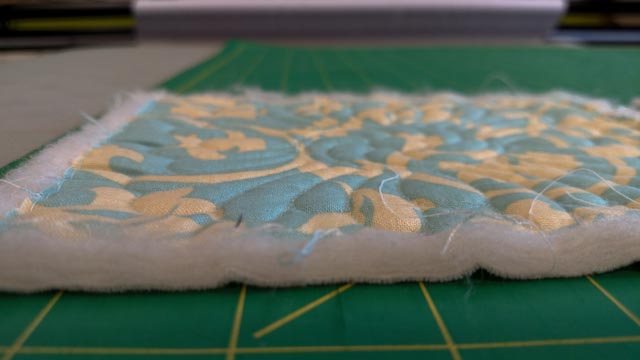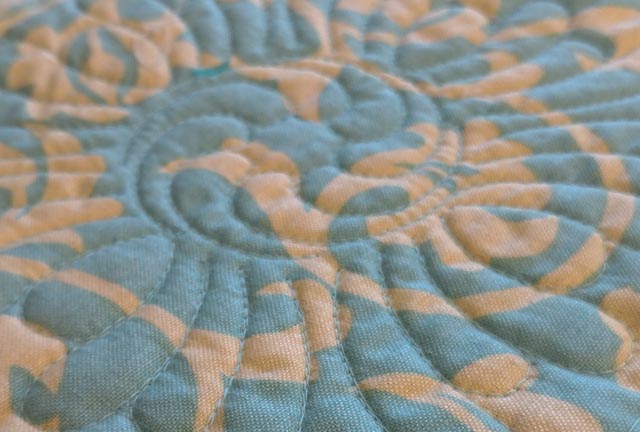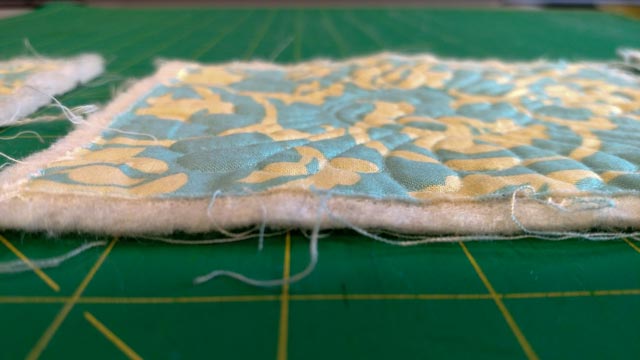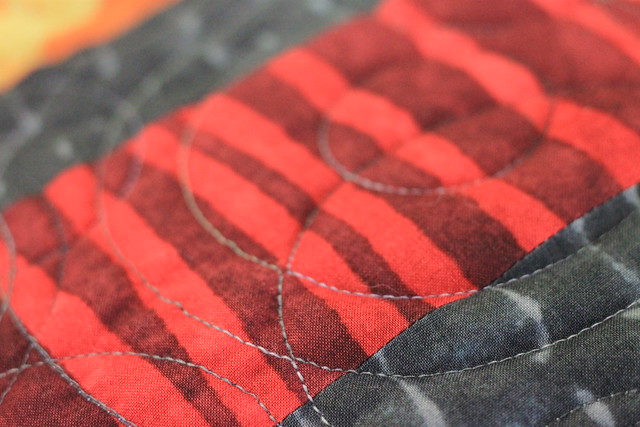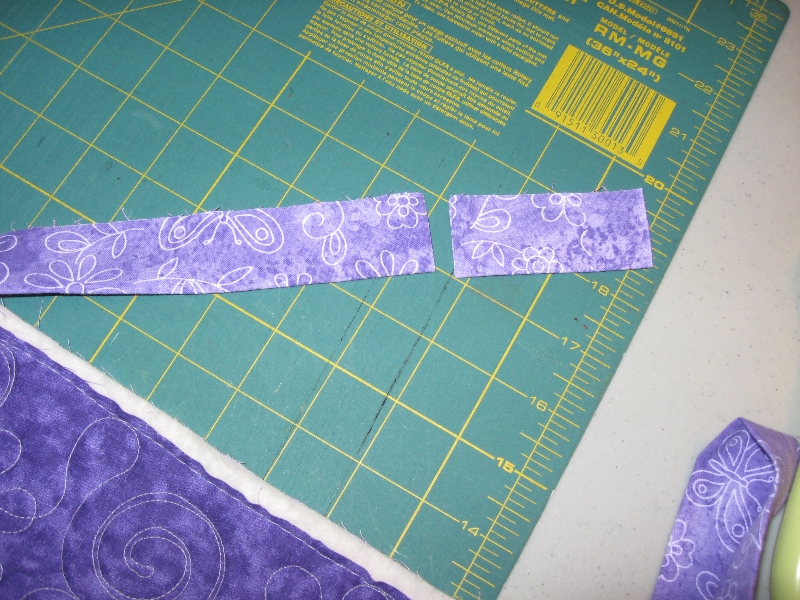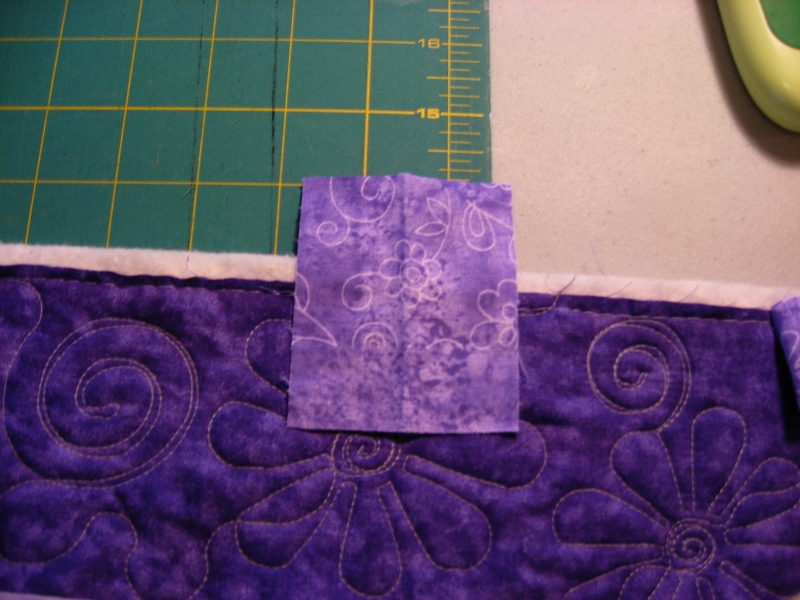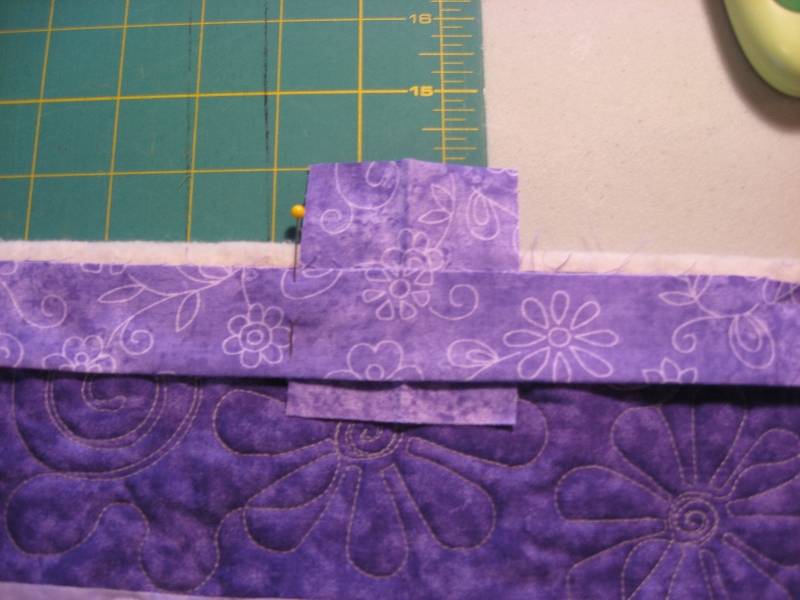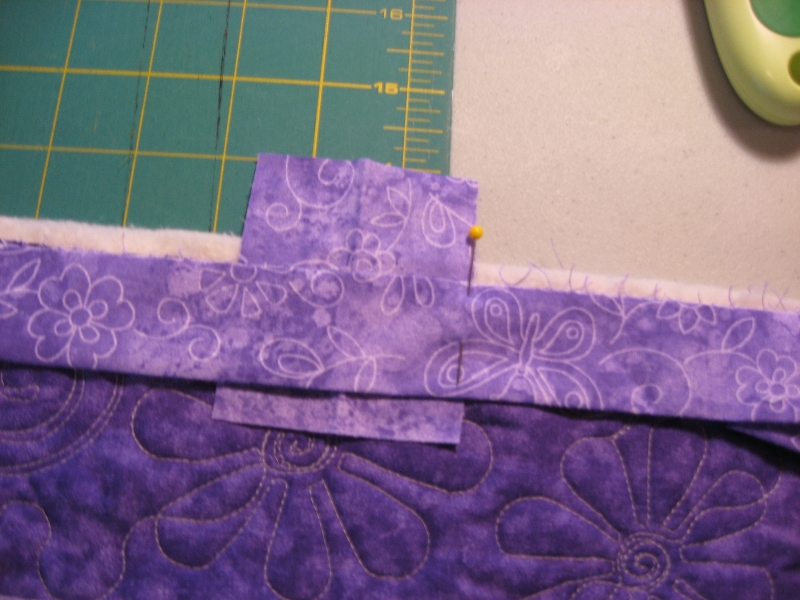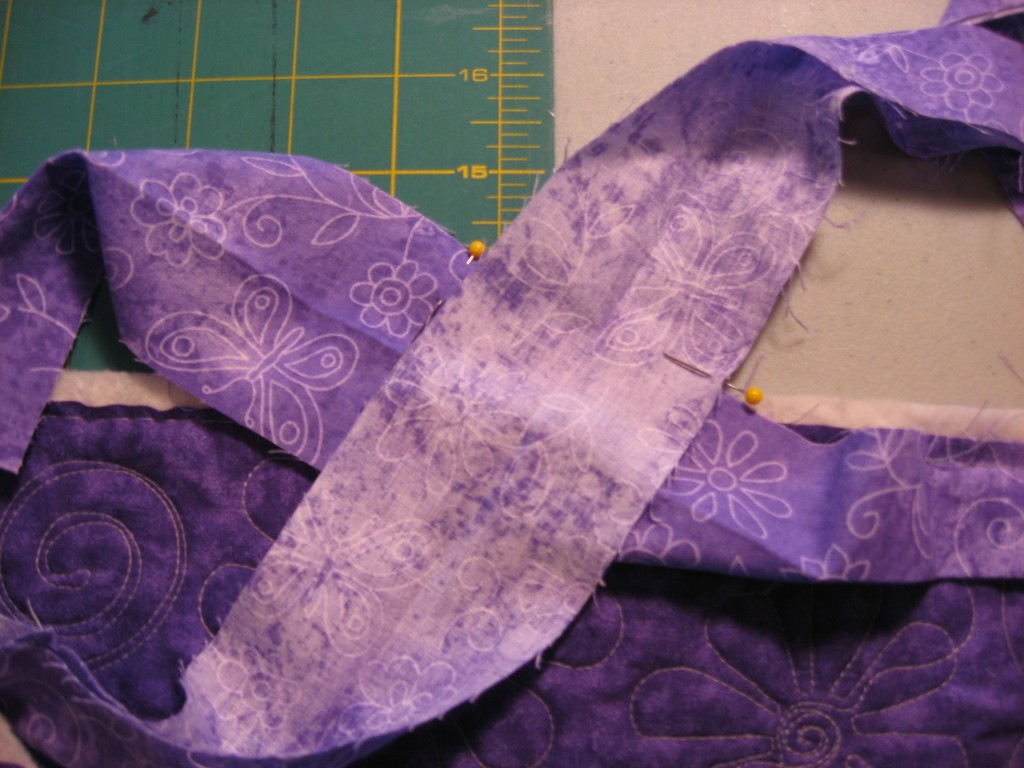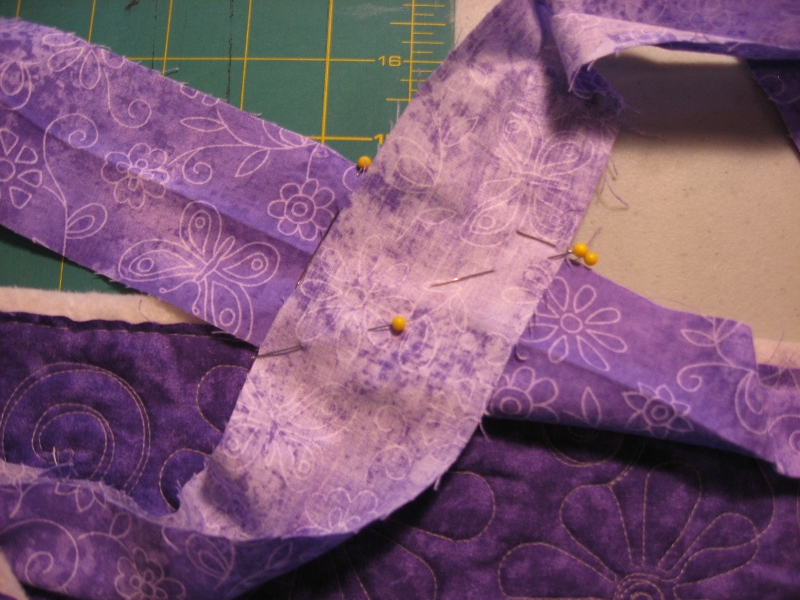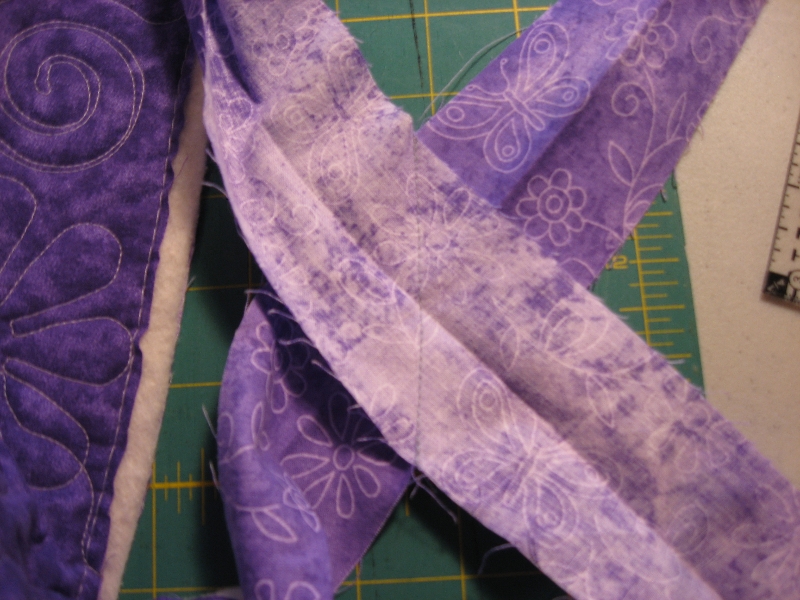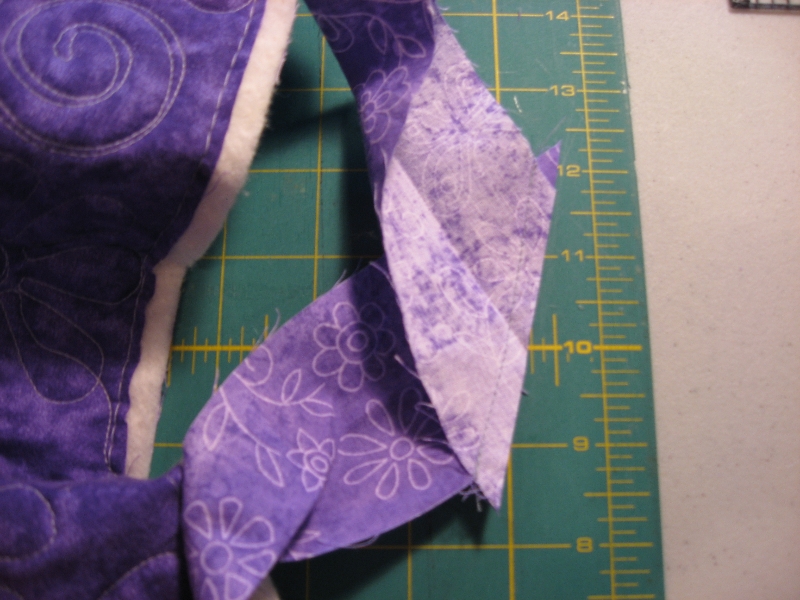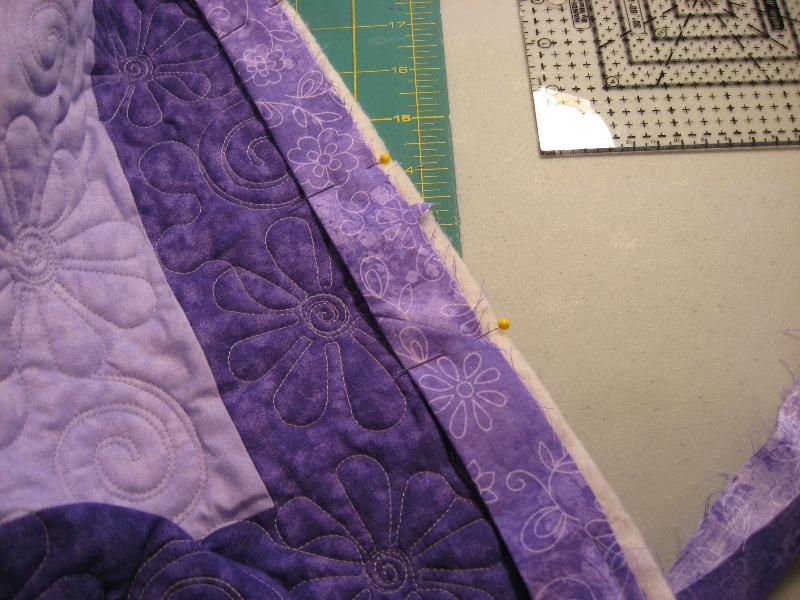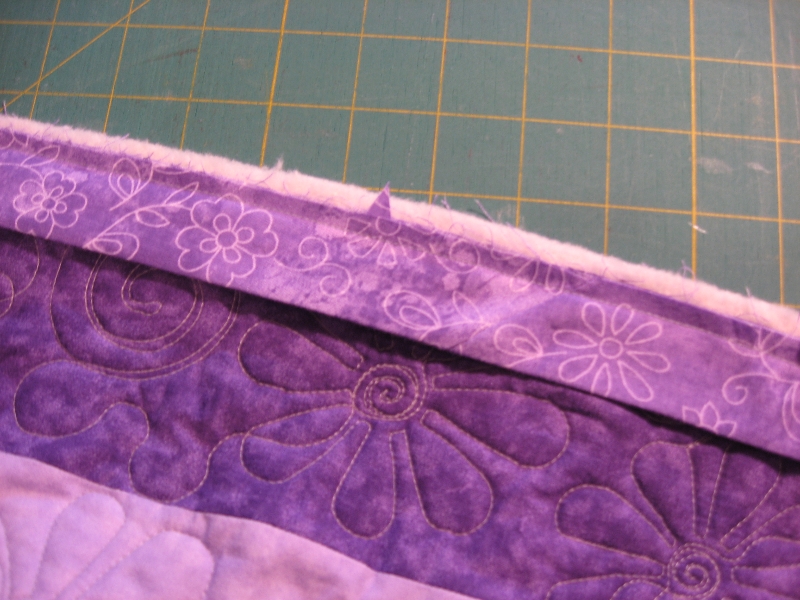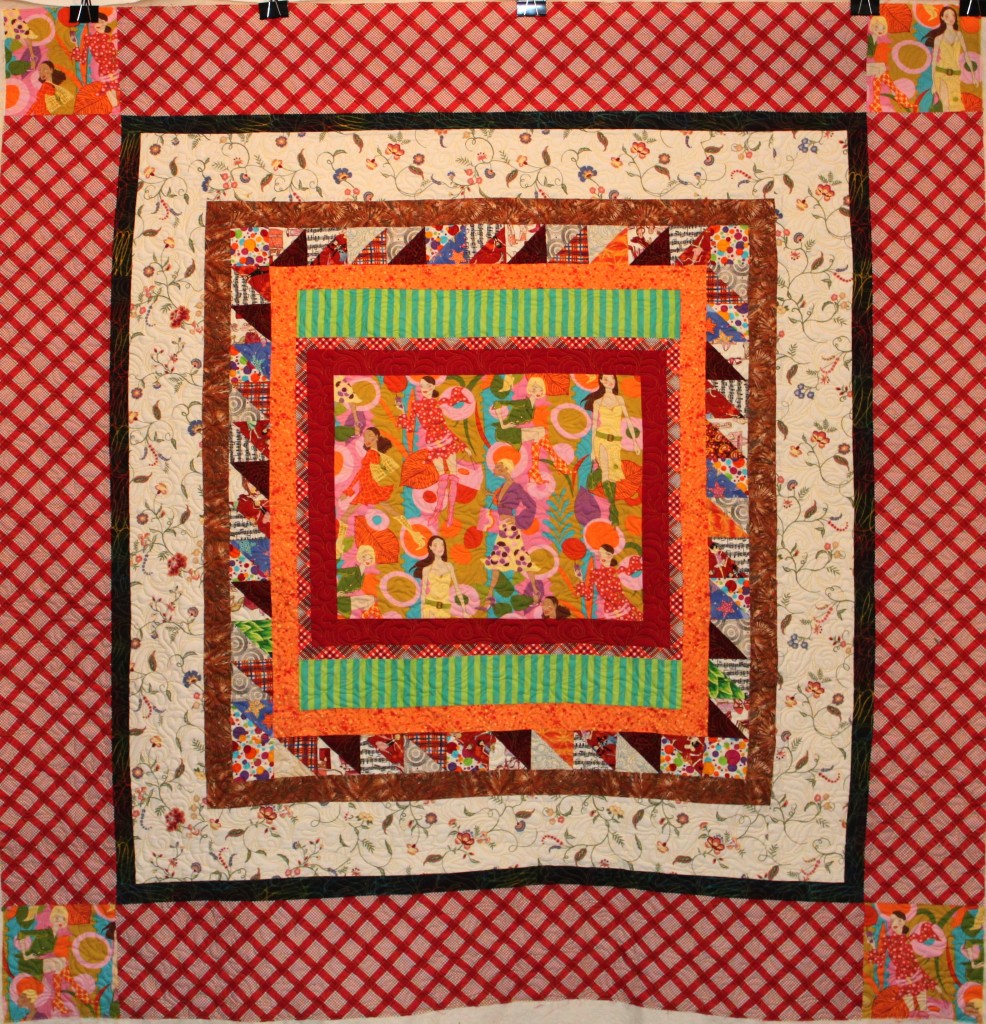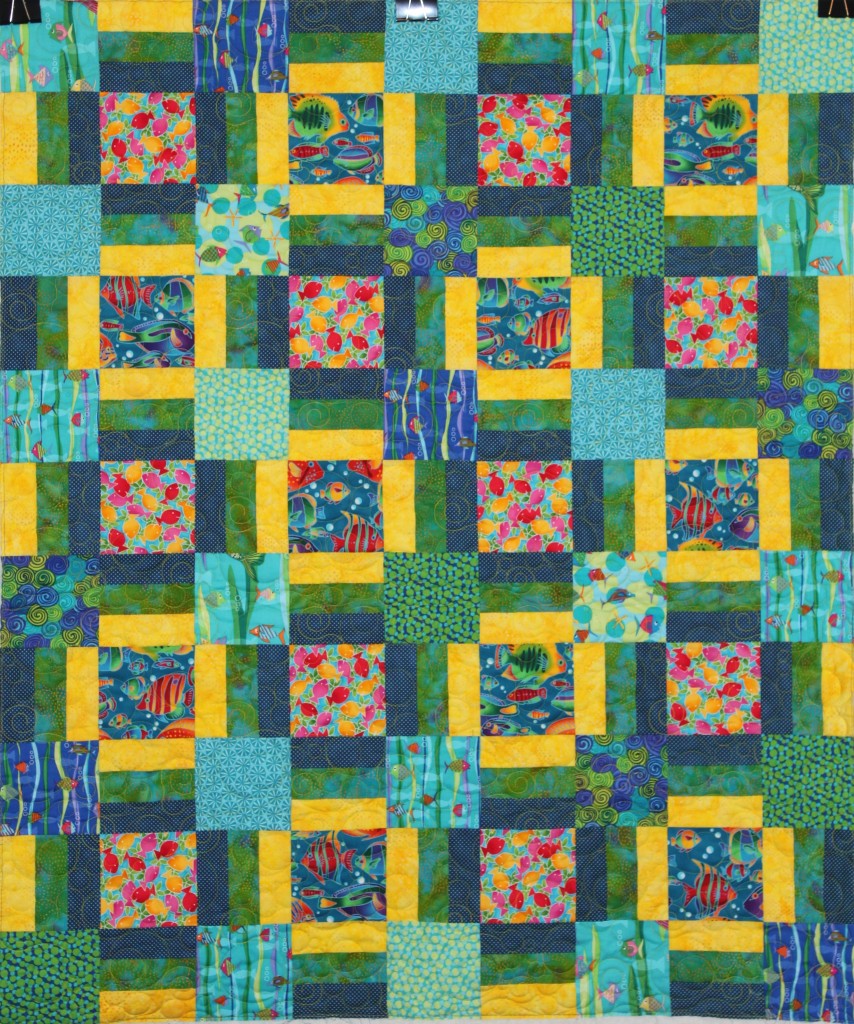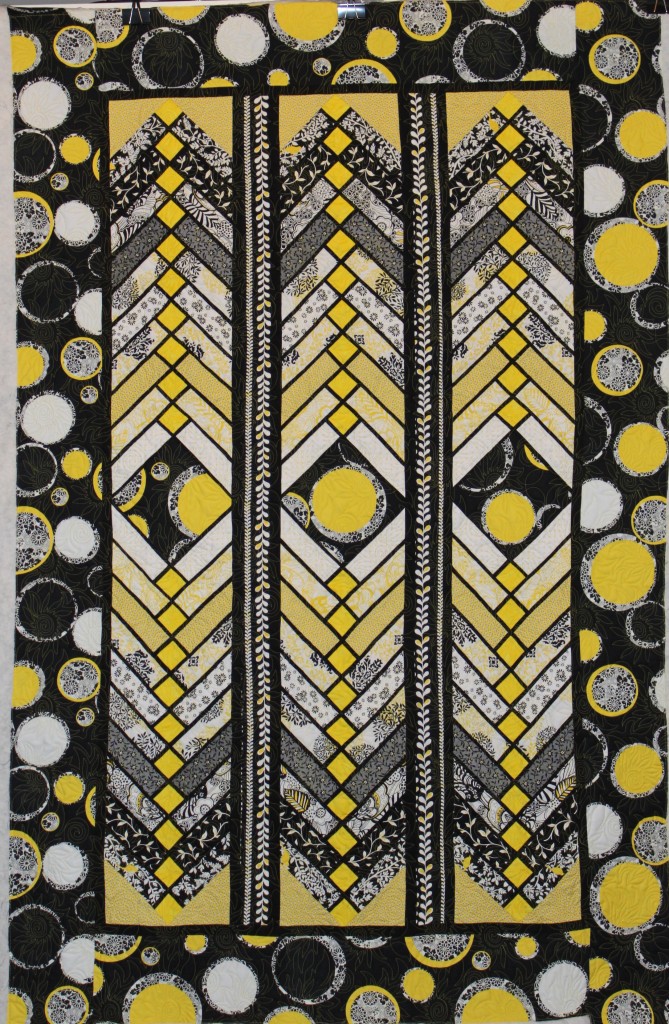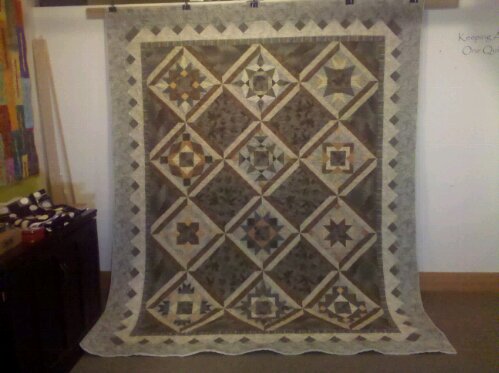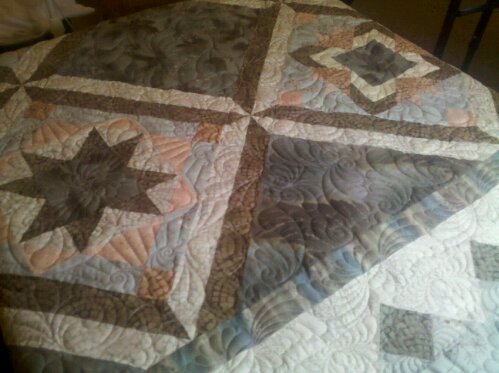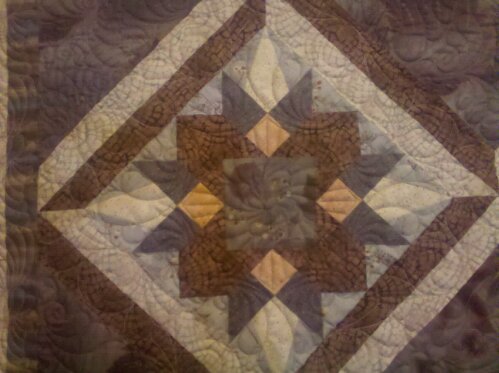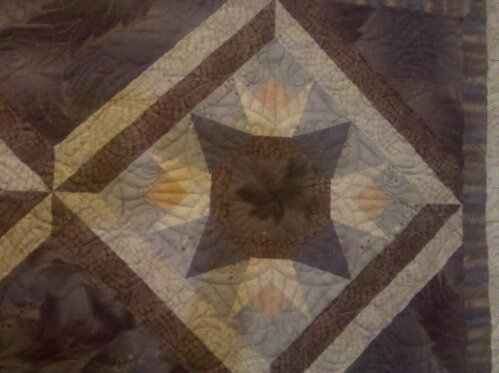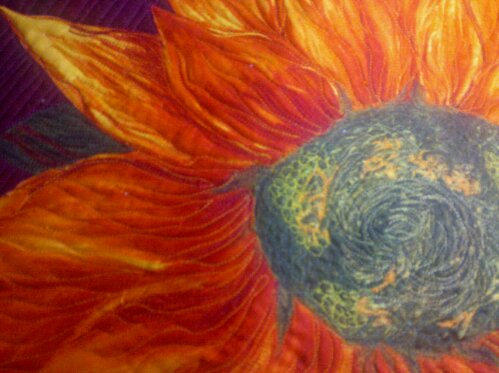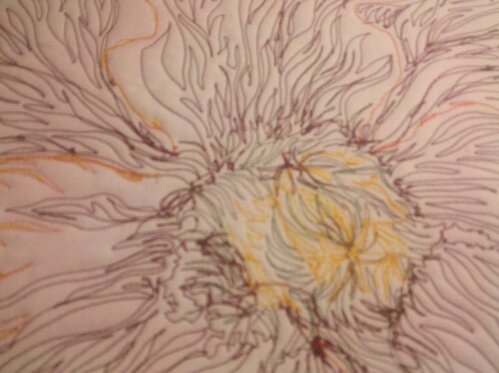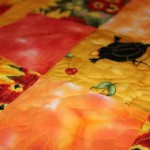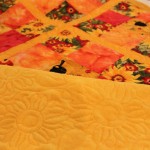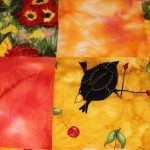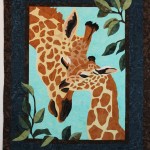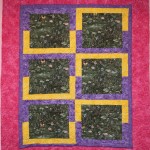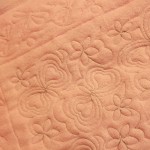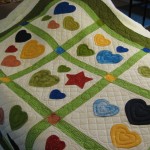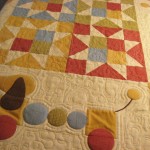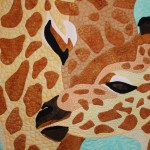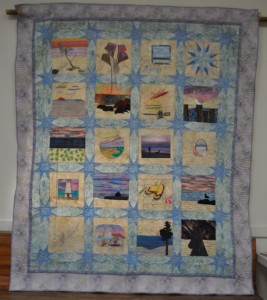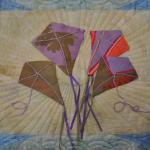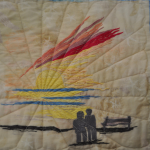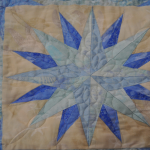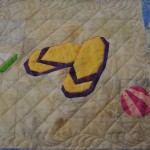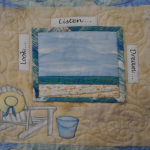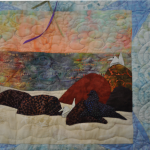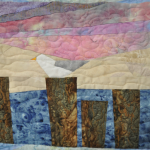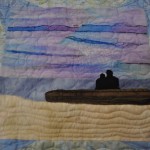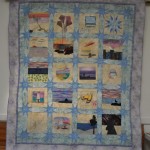Many (ok, most) people notice my thread wall(s) when they enter my studio for the first time. Lots of people ask to take pictures (of course, be my guest!), and I get lots of comments about my nearly-famous thread wall.
Someone even once suggested that maybe I didn’t use all of the colors that I have. Um, actually, I do.
The other running joke in my studio is that while I don’t have 50 shades of gray, I do have 25 shades of nearly white.
So how do I choose which thread color to use? My goal is to find a color that works with all of the fabrics, and often times, it’s easy. Even If the quilt top itself is predominantly one color I’ll select a few cones of thread and pool a bit of each thread color on the quilt top to get a better idea of how each thread will look in quantity. I’ve discovered that what a spool of thread looks like is different than what a pool of thread looks like (what a difference one letter makes).
My general thread philosophy is that I don’t want the quilting to compete with the quilt top, but rather complement the quilt top. So I typically select a thread color that blends rather than contrasts with the colors in the quilt. If there’s a lot of light colors, then I’ll lean toward “natural” or a light version of the quilt’s dominant color–for instance, pale pink, lemonade, or celery.
What (you may ask with a twinkle in your eye) color would you choose if there are a lot of bright, different colors? Great question (I say, twinkling back)!
As an example, there are many beautiful Asian-inspired fabrics that have lots of different colors, some light and some dark. But they almost all have a bit of gold in them, and I’ve found that using a gold-ish color works perfectly.
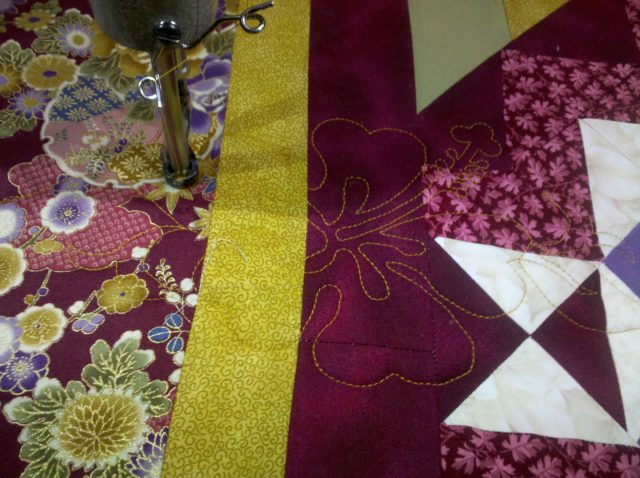
Many modern quilts have lots of great colors and we mix solids with prints. Yay! and also aack! now what color to use? Again, I look to the fabrics in the quilt top, but green and yellow are really good choices to start with. And what works really well in many cases? A yellow-y-green like this or a greenish-yellow like this.
But wait! (you say) What about all of the other colors of thread on your wall? I can assure you, they’re not for show. What we’ve been talking about up to now is choosing one thread to use for an entire quilt. But if the quilting calls for something more than an overall design, then I typically choose a thread color that matches the fabric I’m working on. So that’s where aaallll those other threads come into play. Oh yeah, we play. Wanna play? Got a thread color question? Post it here, or ask me on facebook or instagram. Or come on over and we’ll have a thread party. Yay color!
